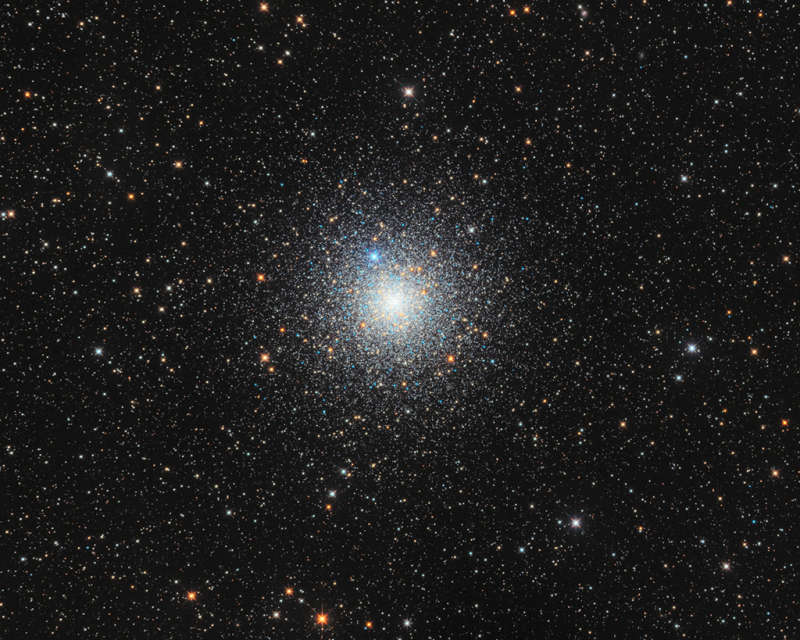
|
Credit & Copyright: Jose Joaquin Perez
Explanation:
Some 13,000 light-years away toward the southern constellation Pavo,
the globular star cluster NGC 6752 roams the halo of our Milky Way galaxy.
Over 10 billion years old,
NGC 6752
follows clusters
Omega Centauri and
47 Tucanae as the third
brightest globular in planet Earth's night sky.
It holds over 100 thousand
stars in a sphere
about 100 light-years in diameter.
Telescopic
explorations
of the NGC 6752 have found that
a remarkable fraction of the stars near the cluster's core,
are multiple star systems.
They also reveal the presence of blue straggle stars,
stars which appear to be too young and massive to exist
in a cluster whose stars are all expected
to be at least twice as old as the Sun.
The blue stragglers are
thought to be
formed by star mergers and collisions in the dense
stellar environment at
the cluster's core.
This sharp color composite
also features the cluster's ancient red
giant stars in yellowish hues.
(Note: The bright, spiky blue star at 11 o'clock from the cluster
center is a foreground star along the line-of-sight to NGC 6752)
|
January February March April May June July August September October November December |
| ||||||||||||||||||||||||||||||||||||||||||||||||
NASA Web Site Statements, Warnings, and Disclaimers
NASA Official: Jay Norris. Specific rights apply.
A service of: LHEA at NASA / GSFC
& Michigan Tech. U.
Based on Astronomy Picture
Of the Day
Publications with keywords: globular cluster
Publications with words: globular cluster
See also:
